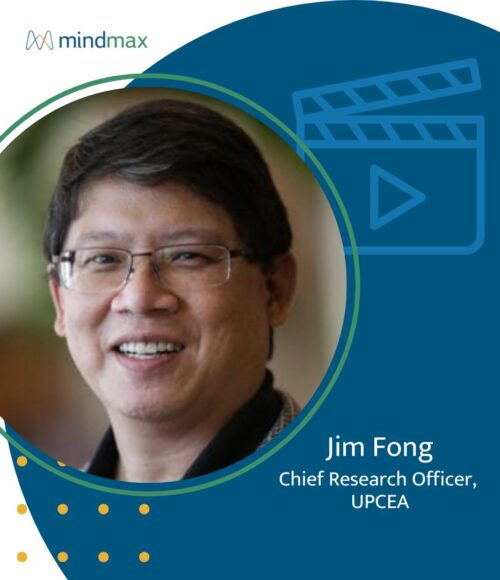Will OPMs Adapt to Meet Evolving Demands in Higher Education?

Will OPMs Adapt to Meet Evolving Demands in Higher Education?
There’s been a consistent buzz in the higher education news world around 2U, the online program management (OPM) company that contracts with nonprofit colleges and universities to build, deliver, and support online degree and non-degree programs.
In June 2021, 2U purchased edX, a popular massive open online course (MOOC) provider created by Harvard University and MIT, signaling a paradigm-shifting merge of OPMs and MOOCs.
Now, there are reports that Byju, an overseas ed-tech company, is looking to buy 2U, raising questions among higher education leaders—particularly 2U’s partners—about Byju’s intentions.
Some speculate that, given Byju’s focus on short-term education, an acquisition would decrease the quality of 2U’s services.
While it’s too soon to tell how this development will unfold, the news has me reflecting on the impact that massive OPMs like 2U have had on higher ed over the last few decades—and thinking about the best ways to meet the evolving needs of schools and students.
The Early Days of OPMs
You may know that I worked in education before I started MindMax. I spent the 1990s building training for companies, then transitioned to developing online programming for corporate training and online learning.
In the early 2000s, colleges and universities began taking an interest in online learning, which was (and still is) much different from learning in a classroom. Implementing online learning programs required tremendous resources: instructional design, programming, technological capabilities, and a specialized platform to launch the online program.
Third-party companies quickly came along and offered to do the upfront heavy lifting, helping schools provide online pathways for students to earn Bachelor’s and even Master’s degrees without stepping foot in a classroom. Naturally, many schools jumped at the opportunity. These third-party companies were the first OPMs, and with their support, schools successfully broke into a new market that would have otherwise had a prohibitively high barrier to entry.
The initial partnerships between schools and OPMs involved long-term contracts in which the development costs to build an online Master’s degree program could total anywhere from $300,000-$500,000 of invested resources. The OPMs assumed that risk.
Up to that point, many schools had been struggling to enroll students into Master’s programs. Part of the challenge was that schools were employing the same higher education marketing strategies used for undergraduate students, failing to acknowledge the critical differences between college freshmen and adult learners.
Some OPMs stepped up to help schools overcome this obstacle, providing assurances that they would not only build a Master’s program but also market, enroll, and recruit students into that program. The schools didn’t have to invest a penny into these initiatives. The OPMs were confident they would profit from enrollments—and they were right.
The intriguing proposition offered by OPMs was polarizing at first: some schools were immediately on board, while others preferred to rely on the strength of their faculty and brand. However, it wasn’t long before OPMs became commonplace in higher education, with some of the most prominent colleges and universities in the country adopting this model.
MOOCs Enter the Scene
In the 2010s, there was some backlash from schools who rejected the OPM model and believed they could manage online programs themselves. They recognized that developments in technology had made the tools and platforms easier to navigate and that the appetite for online learning had become broader and more accepted—two factors that supported their drive to keep online learning initiatives in house.
However, as is often the case in life, the DIY approach proved feasible on a small level but much harder at scale. And that’s when MOOCs began entering the scene, initiating yet another paradigm shift.
MOOC providers like Coursera and edX started putting massive amounts of content online. Schools partnered with these companies, funding the development of free courses and programs with the idea that they would generate exposure to high numbers of potential students, some of whom would go on to take classes directly from their institutions.
There was one major problem with this approach: while these courses and programs had huge enrollment rates, the dropoff was steep. If 100,000 students enrolled in the course, perhaps only 3,000 would start it, and just a few hundred would complete it. Coursera and edX pivoted in different directions in an attempt to address this problem, acknowledging that they needed to implement solutions. One such solution was building in incentives, such as certificates, for completing a free course or program.
The Latest in Higher Education News: The Merging of OPMs and MOOCs
Today, we’re seeing OPMs and MOOCs coming together in a new way. 2U’s purchase of edX is the most obvious example of this development: taking a revenue share for a Master’s program and buying one of the earliest freemium providers of mass online open courses.
The question, now, is where do we go from here? Regarding Master’s degree programs, in particular, the opportunities are finite, and the market will plateau eventually. There are only so many Master’s degrees, only so many schools, and only so many people who want to pursue a Master’s.
To remain competitive and relevant, schools, and perhaps OPMs as well, must expand beyond the traditional confines of higher education. They need to tap into the growing demand for certificates, smaller credentials, and—yes—even lifelong learning without the credentials. It will be interesting to see how this shift affects the relationship between colleges and OPMs from a contracting and revenue sharing standpoint.
There’s no doubt that OPMs have been highly influential in the past few decades. But will they continue leading higher education into the new frontier ahead? And how will a potential Byju acquisition influence what happens next? We’ll have to wait and see. In the meantime, I’d love to hear what you think. Connect with me on LinkedIn, and let’s continue this conversation.
Related Ideas
UPCEA’s Jim Fong Wants More Flexible Learning Pathways

